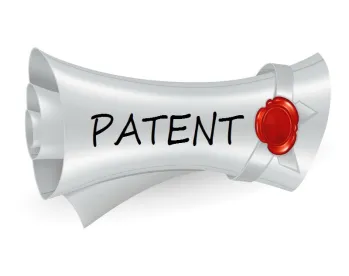USPTO (United States Patent and Trademark Office) rejection of a patent claim, alleging the claim is not significantly more than an abstract idea under 35 USC §101, is a frequent and often frustrating occurrence during patent examination of claims in any technology that involves computers, controllers or processors. Here is another useful strategy the patent practitioner can use in writing a response to an Office action, or an appeal brief.
Suppose a USPTO examiner has written a rejection that the claims amount to nothing more than the abstract idea of a mathematical calculation (or other abstract idea) plus the instructions to implement it on a generic computer, and are therefore directed to patent ineligible subject matter. The patent practitioner could get into a back-and-forth argument with the examiner about whether or not claim limitations are significantly more than the abstract idea, wasting multiple cycles of examination because examiners can be very difficult to convince of this. One promising approach is to argue that the claims are directed to a specific technological solution to a specific technological problem, as has been successful in the courts. But, even this may not be convincing, if argued in the abstract, because, after all, we are dealing with abstract ideas to begin with, and it is all too easy for an examiner to dismiss an abstract argument as “not convincing”.
A concrete, bright line test can be constructed, which may sway an examiner (or appeal board, if the rejection is appealed). Articulate a specific technological problem that the claims solve or are directed to solving. Analyze the claim and cite some of the important claim limitations that are not present in the alleged abstract idea, and explain the significance of these claim limitations in terms of the technological problem and technological solution. Then, compare the abstract idea, for example “mathematical calculations” in and of itself, without the claim limitations that extend beyond the abstract idea, to the technological problem. Does the abstract idea in and of itself, with or without a generic computer, solve the technological problem? Of course not. Does the abstract idea plus the claim limitations that extend beyond the abstract idea, solve the technological problem. Yes, the combination of abstract idea plus claim limitations that extend beyond the abstract idea does solve the technological problem. This means the claim as a whole amounts to significantly more than the abstract idea plus the instruction to implement the abstract idea on a generic computer. This bright line test makes it very difficult for an examiner to prove that the claim is nothing more than an abstract idea implemented on a computer. The examiner would either have to prove that the additional claim limitations are mere field of use limitations, which assertion is readily refuted through the above analysis, or that the claim as a whole does not solve the specific technological problem, which you have just demonstrated it does. This carefully constructed argument passes logical rigor, and any attempts in further patent examination to defeat it can be addressed on a point by point basis with factually based logic.
Takeaway
• Concrete statement of a specific technological problem that the claims solve or address lays a strong foundation for arguments of patent eligible subject matter under 35 USC §101.
• Testing to see whether the abstract idea in a claim rejection solves the specific technological problem provides a basis for comparison with the claim as a whole.
• Testing to see whether the abstract idea in combination with the claim limitations that are beyond the abstract idea solves the specific technological problem provides a comparison for the claim as a whole versus the abstract idea.
• Once the abstract idea has been compared with the claim as a whole, in light of the specific technological problem, the conclusion can be drawn that the claim is significantly more than the abstract idea with instructions to implement it on a generic computer.




 />i
/>i

